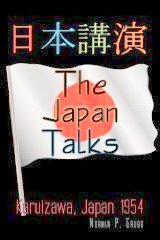Tuesday, September 28, 2010
(09-28) 16:32 PDT ROHNERT PARK --A Sonoma County man was convicted today of first-degree murder for fatally stabbing a well-known guitar maker during a burglary in Rohnert Park.
Joshua Rhea Begley, 28, of Windsor killed Taku Sakashta, 43, whose body was found shortly before 4 a.m. Feb. 12 outside his business on the 600 block of Martin Avenue. Sakashta had been stabbed numerous times in the head, neck, chest and hand.
Sakashta's blood and DNA were found in Begley's car and on his shoes, and a witness placed Begley near the scene at about the time of the slaying, prosecutors said.
A Sonoma County Superior Court jury convicted Begley today of first-degree murder, robbery, burglary, evading arrest, resisting a police officer and enhancements for using a knife and causing great bodily injury.
Sakashta had 25 years of experience designing and crafting guitars, according to his Web site. Police checked on his business after his wife called to report that he had failed to return home.
Four days before Sakashta's body was found, Begley was arrested in Petaluma on suspicion of being under the influence of drugs. He was released on bail the next day.
E-mail Henry K. Lee at hlee@sfchronicle.com.
In 1995 Taku independently began designing and crafting guitars for the general public in addition to professional musicians. He has recently built guitars for musicians including Tony Darren, Robben Ford, Tony Macus, Boz Scaggs, Ellen Stephenhorst, and Martin Simpson, and is designing a guitar for Tuck Andress and Pat Martino.
All his designs combine traditional and innovative elements for exceptional sound and playability, tempered for each individual musician. Craftsmanship is of the highest quality using the best materials available. Finish and appearance are recognized as superb.
Taku now has 25 years of professional experience (primarily with professional musicians) and has become well known for his special talents in all fields of the musical industry.
Taku Sakashta's philosophy on his guitars are that they are an extension of the musician's personality and soul. Each musician demands different instruments because each has different talents, motivations, and preferences --- from sonic, aesthetic, and tactile points of view. Taku realizes the importance of past traditions in guitar building, and has used this as a foundation to build his forward-looking instruments for the consummate performer looking for personalization without compromise. And he does this while still retaining the superior advantages of past, traditional designs and features.
Taku builds a range of instruments which fit different guitar styles. These models form the main product line. Many times, players like the features of one guitar, but strive for another because of different features -- each player trying to balance sonic, aesthetic, and tactile feelings with their own personality. Taku understands this, and it is reflected in the many options which fill the gap between his guitar lines. This allows the performer to choose the best features, and create a truly unique, personalized instrument.
























